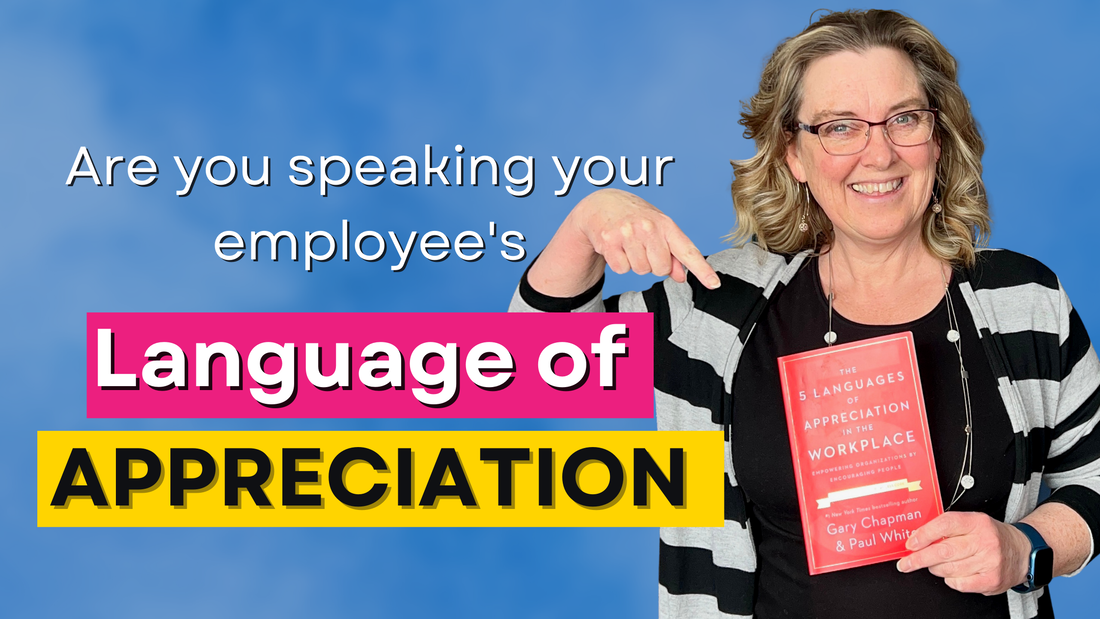|
Do you ever try to give appreciation to your employees and feel sometimes it falls flat? Have you ever wondered why you bother, what you are doing wrong or if it is even working?
You aren't alone! Many leaders attempt to give appreciation but miss the mark leaving both them and the employee wondering, "What the heck was that?" You: Thanks for helping me out with that project. Them: Sure 🤨 You in your head: That's it! Just sure. It doesn't even seem like you heard what I said! You: Take the afternoon off. You deserve it! Them: Nah, I've got lots to do. I'd rather get it done. 🤨 You in your head: Um...Does a whole afternoon off not sound good to you? You: I wanted to acknowledge the work you've all put in over the last few months. Here's a mug and t-shirt! Them: Later, you hear two staff mumbling in the coffee room; A stupid mug and a t-shirt I'll never wear! 🤨 You in your head: Really! How ungrateful! Why bother with recognition? It's no wonder many leaders throw their hands up and wonder why bother. Yet we know that when employee recognition hits the mark, employees are:
Given we are struggling to get and keep good employees who don't burn out, the stats are worth looking at! And it would behoove us to consider what we need to do to get employee recognition to stick! No, but we do need to speak their appreciation language Gary Chapman and Paul White wrote The 5 Languages Of Appreciation In The Workplace: Empowering Organizations by Encouraging People. This was a follow-up to Chapman's best-selling book The 5 Love Languages. In The 5 Languages Of Appreciation In The Workplace, leaders and coworkers learn to understand each other by speaking each other's appreciation language. When you learn t do this, you' will also learn to make appreciation stick! The 5 languages of appreciation in the workplace Here's a summary of the 5 languages of appreciation in the workplace:
And it needs to stick If you're offering recognition or appreciation in a way that doesn't land for an employee, you're not making them feel appreciated; instead, you might actually be turning them off. For example, if you acknowledge someone at a staff meeting for their work, and they don't like a public announcement, they may be annoyed, embarrassed, and hope you never do it again. On the other hand, that same person might've appreciated you coming into the office, sitting for five minutes and spending quality time with them. Therefore, it would help to learn and use the languages of appreciation. However, as I said in this post, 5 Keys to Meaningful Employee Recognition appreciation isn't just your job. There is no way you have the time, the resources, or the capacity to do this all by yourself. That's a heavy burden to take on and one that you will not have the time for. Also, when we encourage peer-to-peer recognition and appreciation, there is increased collaboration, and stronger peer-to-peer relationships are built. Your employees will communicate more effectively, get along better, and they're going to support each other, especially in those crisis moments. How to use the book The 5 Languages Of Appreciation in the workplace to create a culture of recognition So, how could you use the book The 5 Languages Of Appreciation In The Workplace to create a culture of recognition? Here are four suggestions: 1 - Identify everyone's language of appreciation Clear up miscommunication by communicating appreciation in languages you all understand. That starts with identifying everyone's language of appreciation. Give your team members access to the assessment that helps them identify their preferred language of appreciation. This could help them understand how they prefer to be appreciated and also help them recognize the preferences of their colleagues. Language of Appreciation Assessment You could purchase an assessment for each team member or buy a book for each, which has a code to complete the assessment so that everyone can identify their language of appreciation. 2 - Start a book club You could suggest the team read The 5 Languages of Appreciation in the Workplace as a group and discuss the concepts presented in the book. Then, you and your team could meet once every two weeks for a couple of months to discuss the book and share ideas on implementing the concepts presented in their work environment. 3 - Train your team You could read and study the book and use the book as a basis for a training session or workshop for your team. You'd want to cover the different languages of appreciation, how to identify them in team members, and how to use them to create a culture of recognition. 4 - Give them the tools to appreciate each other with the 5 languages You could encourage peer recognition by providing team members with the tools they need to identify the languages of appreciation in their colleagues.
These tools can help team members understand and use the various languages of appreciation in the workplace and create a culture of recognition and appreciation that can improve team morale and productivity. It's important to note that everyone has a preferred language of appreciation and that not all languages of appreciation will be equally effective for every person. The key is to identify each team member's preferred language of appreciation and use it regularly to create a culture of recognition and appreciation in the workplace.
0 Comments
Your comment will be posted after it is approved.
Leave a Reply. |

Available on Amazon
Archives
May 2024
|
|
Leadership TRAINING for Nonprofit Leaders
Become a confident and competent nonprofit Leader: Join The Training Library membership Executive and Leadership COACHING Leadership Coaching for Nonprofit Executives, Leaders and ManagerCoaching |
PODCAST for Nonprofit Leaders
The Surviving to Thriving podcast: Strategies, systems and support to lead your nonprofit with confidence FREE RESOURCES to Grow your Leadership Skills Free Leadership Training Resources, Worksheets and Templates |
Become a CONFIDENT LEADER
|




 RSS Feed
RSS Feed
